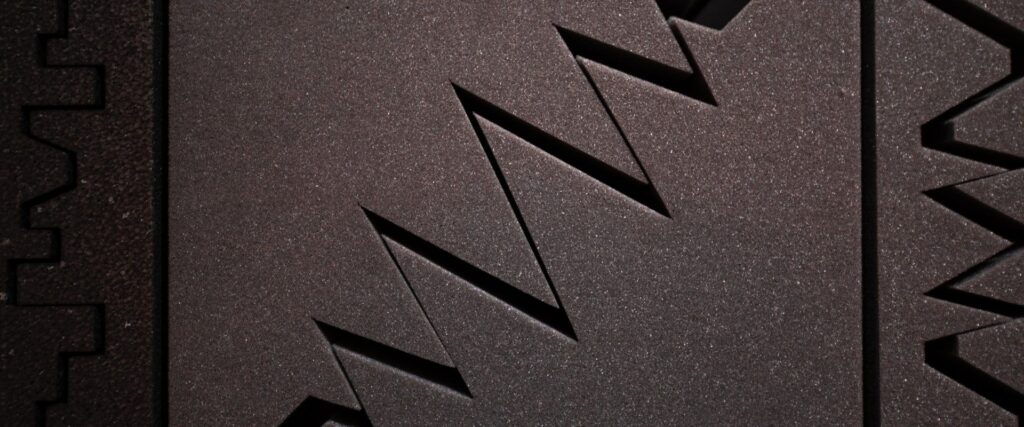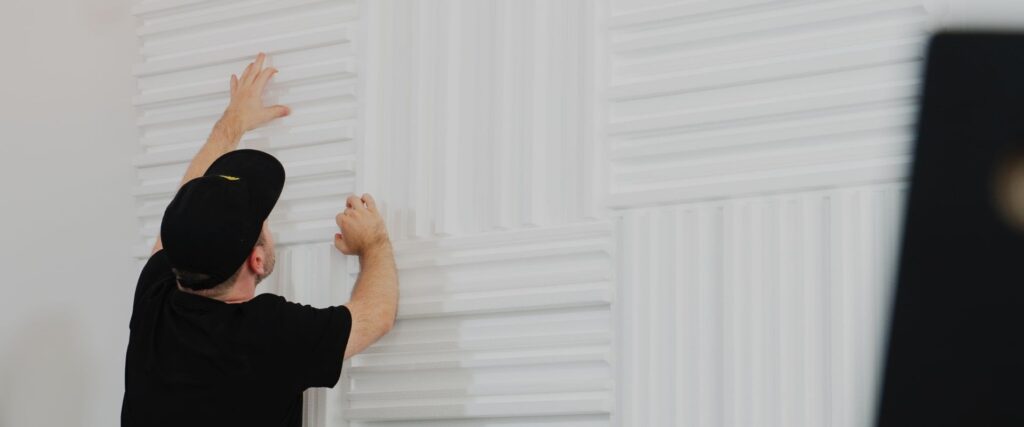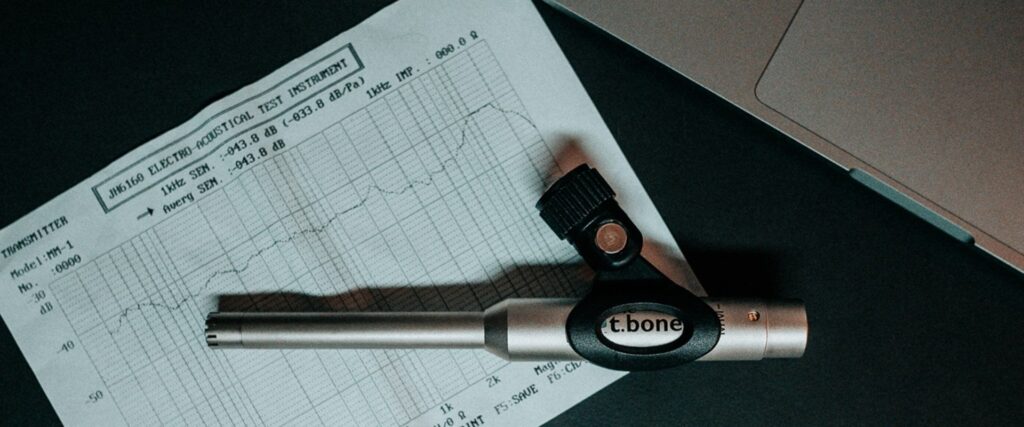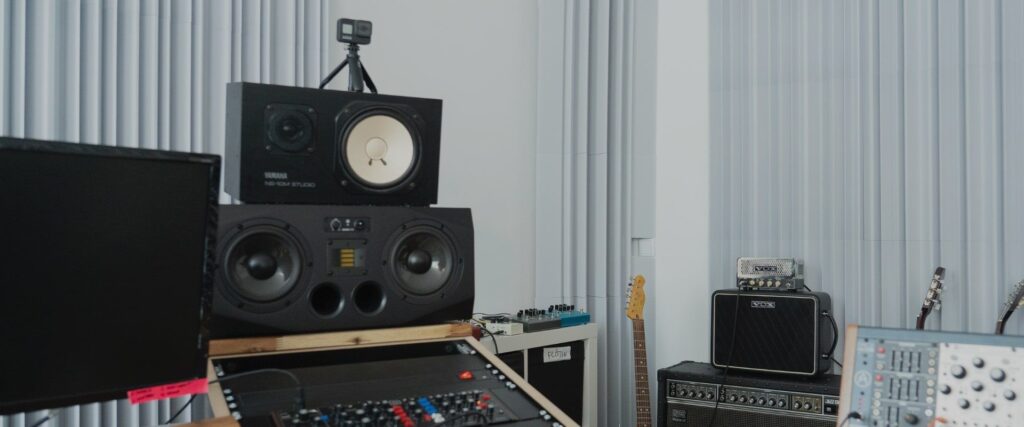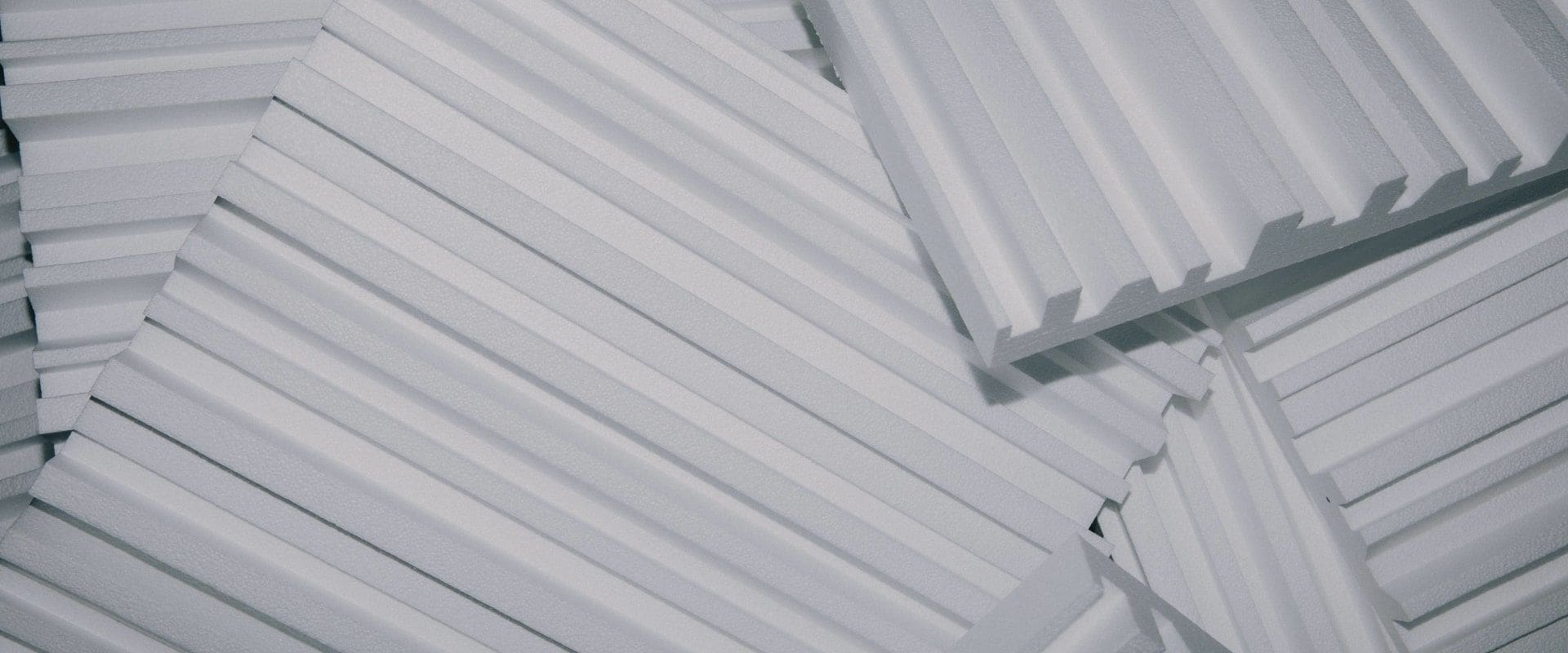
FLUTTER ECHOS
You probably know the staggered series of echoes that occur when you clap your hands in a small, empty room. That’s an example of flutter echoes. Flutter echoes are staccato-like repetitions which stand out of the diffuse reverberation and are clearly perceptible. Flutter echoes mostly occur in the mid and high frequency ranges.
When two reflective surfaces are parallel to each other, sound is reflected back and forth between them without losing energy quickly. These surfaces don’t have to be walls. Flutter echoes can also occur between the floor and the ceiling.
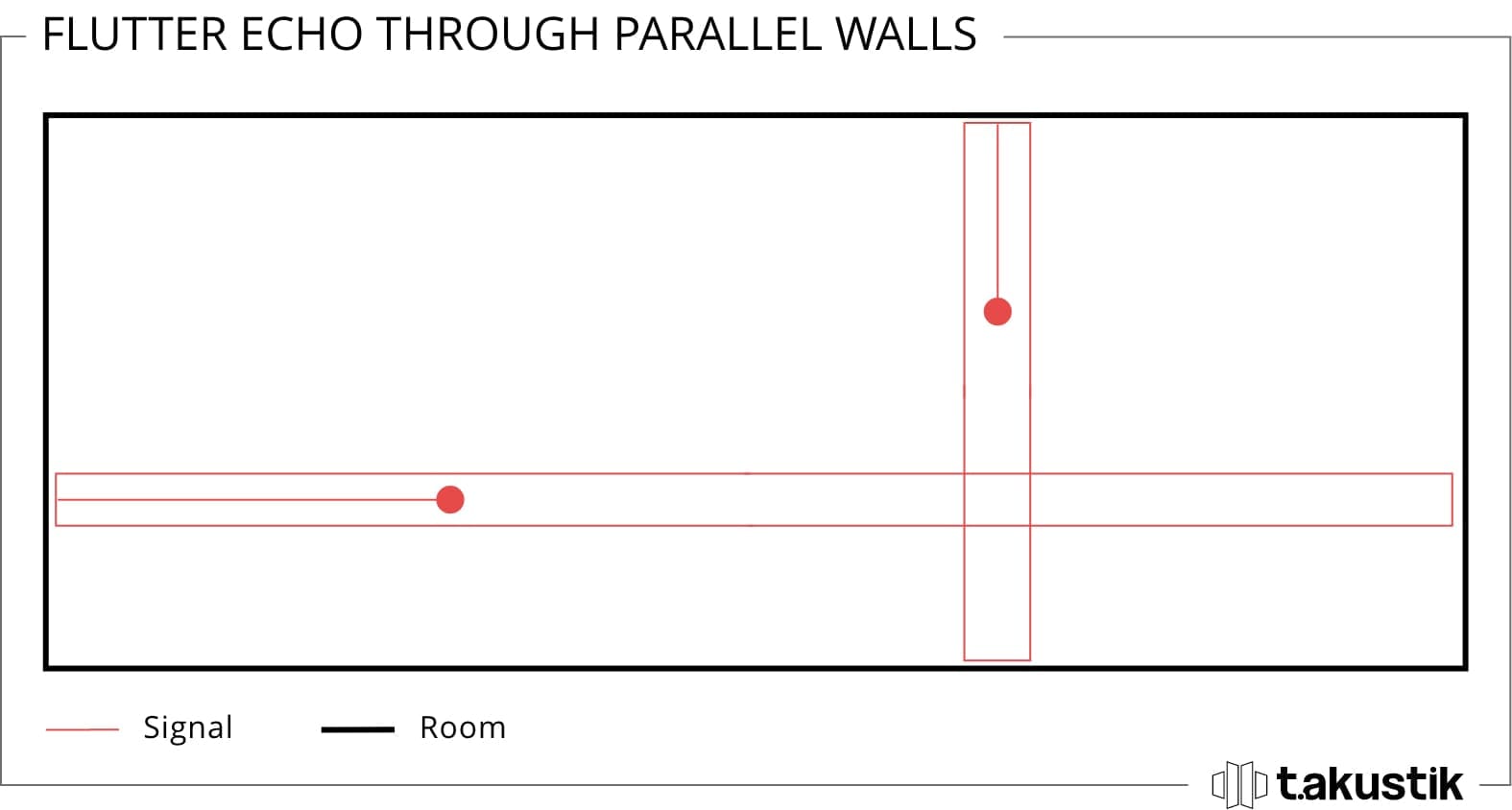
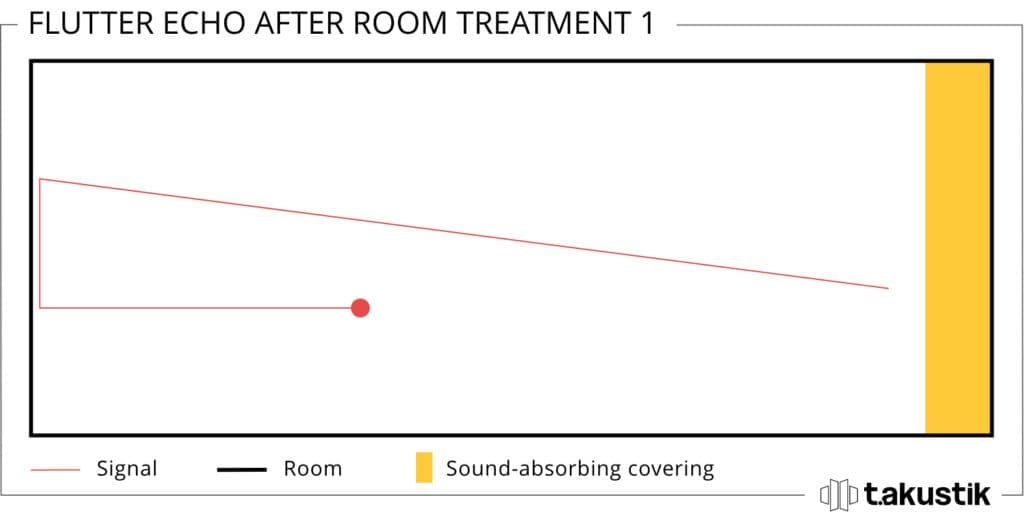
If the surfaces are close to each other, the series of repetitions is very closely spaced and can take on a tonal character. This is especially annoying, in the control room as well as during recording.
It’s almost impossible to measure flutter echoes. But it’s possible to determine the most problematic frequencies by taking the distance between the surfaces and the speed of sound into account.
In order to rule out flutter echoes from the get-go, control rooms are often designed with as few parallel surfaces as possible. This effectively prevents flutter echoes from spreading. But in a room that hasn’t been built as a control room, it can be necessary to remove unwanted flutter echoes.
While it’s possible to divert sound, this should be done on a large scale. And when you make improvements to the room acoustics, you often combine several problems. That’s why diffusion and absorptions are good options. Diffusion spreads out the sound waves that hit a surface in a diffuse pattern. Absorption “swallows” a portion of the sonic energy.
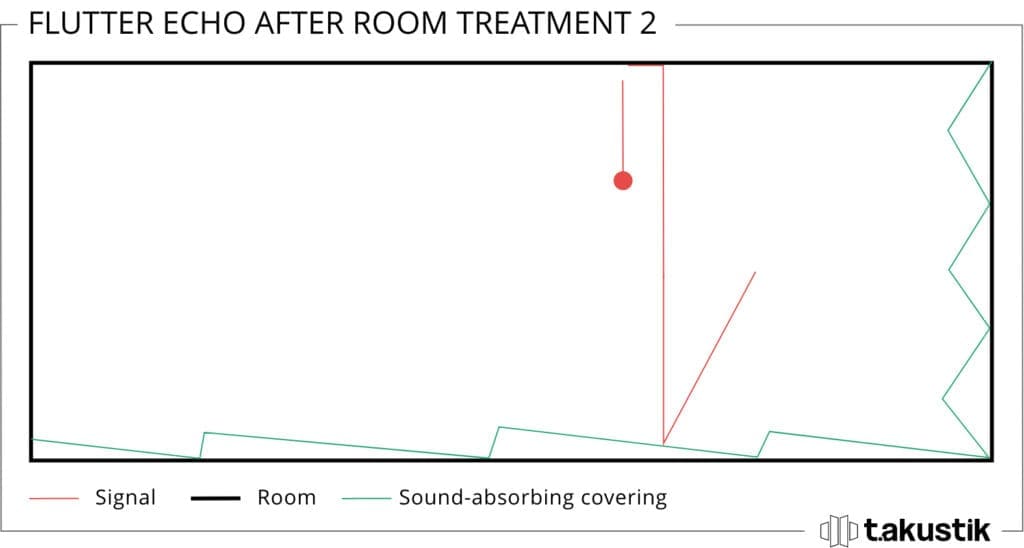
More like this
You need to load content from reCAPTCHA to submit the form. Please note that doing so will share data with third-party providers.
More InformationYou are currently viewing a placeholder content from Turnstile. To access the actual content, click the button below. Please note that doing so will share data with third-party providers.
More InformationYou are currently viewing a placeholder content from Instagram. To access the actual content, click the button below. Please note that doing so will share data with third-party providers.
More InformationYou are currently viewing a placeholder content from Instagram. To access the actual content, click the button below. Please note that doing so will share data with third-party providers.
More Information